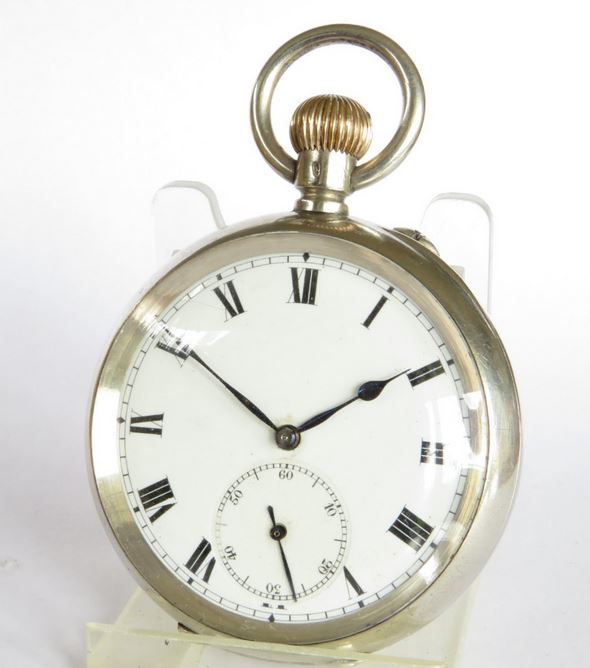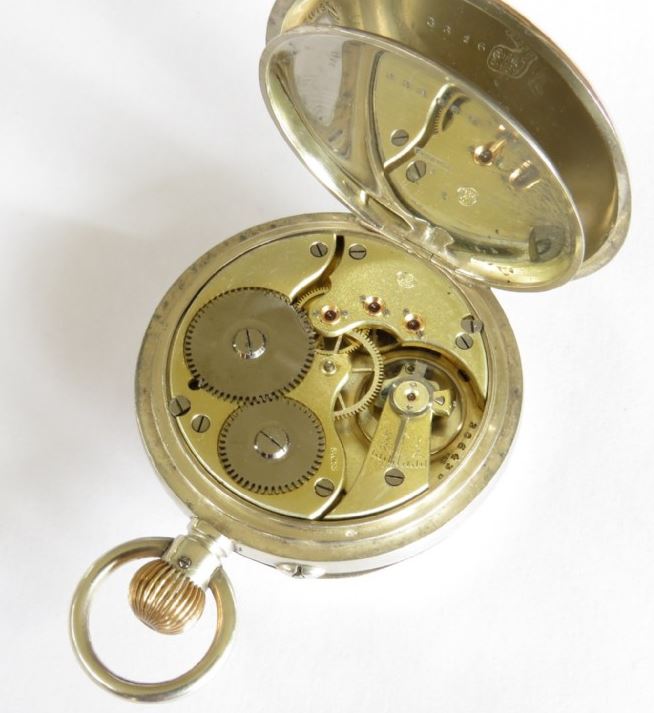Last updated on February 19, 2023
It has been quite a while since I have added to my collection. In fact, it has been nearly six months. This is not through lack of trying, I search online every day for antique watches, but I find that the more I learn the more particular I become. I am always looking to add something different to my collection. It could be a manufacturer or watchmaker that I don’t yet have or it could be a particular type of movement. I enjoy the research as much as I enjoy the actual antique watches. Occasionally, I miss out on an opportunity because I spend too much time researching before I decide to buy. However, sometimes the in-depth research pays off and saves me from making an impulse purchase. This antique Stauffer & Co ‘Peerless’ silver pocket watch is the perfect example.
Stauffer & Co
Stauffer, Son & Co. was established in Switzerland in 1830 with an office in Geneva and a factory in La Chaux-de-Fonds. The factory was known as the Atlas factory. Around the mid-1800s they established an office in London, trading under the name Stauffer & Co. In the 1890s the London office was selling so many watches that the Atlas factory couldn’t keep up with the demand. As a result, Stauffer & Co. started to source movements from other Swiss watchmakers including IWC. This is what caught my attention with this particular watch, it had the S&C mark for the London branch and another marking of ‘Peerless’ on the movement. Had the movement been made in the Atlas factory it would have had an SS&C mark. ‘Peerless’ was a brand registered by the London branch and was known to have been used on movements produced by IWC.
IWC
In 1868, IWC (International Watch Company) was founded by American watchmaker Florentine Ariosto Jones in Schaffhausen, Switzerland. Jones wanted to combine the watching craftsmanship of the Swiss with the modern manufacturing methods from the US to produce watches for the American markets. His factory used hydroelectric power from the river Rhine to power its machinery. Today, IWC is known as a luxury watchmaker, most notably producing its Pilot and Portugieser ranges of watches.
Peerless
The watch was listed as using an IWC movement based on the use of the Peerless brand. However, further research suggests that the Peerless brand had sometimes appeared on movements from other Swiss manufacturers. This meant that it was possible that it was an IWC movement, but not guaranteed. However, the six-digit serial number on the watch did align with the IWC database for around 1903. At this stage in my research, based on the serial number, I am fairly comfortable accepting this as an IWC movement.
Stauffer & Co silver pocket watch
The watch has a stem-winding, pin-set movement which was working accurately to within a couple of minutes per day. The watch is wound by turning the crown. To set the time, the pin is depressed and the crown is turned to move the hands. The pin-set feature is a safety mechanism to ensure that the time is not accidentally set incorrectly. This feature was very common on railway watches at the time. The movement appears to have 15 screw-set jewels, which is always a sign of quality.
The watch measures 50mm in diameter excluding the winding stem and the loop. The case is silver and there are Swiss hallmarks for 935 silver inside both of the case backs. Overall, the case is in good condition with a few little marks but nothing too detrimental. The original glass crystal is in mint condition. The visible part of the enamel dial is in very good condition. There are a couple of chips to the very edge, but they are mostly covered by the bezel. The watch includes the original blued steel hands.
Swiss made?
Because of the S&C mark on the movement, we know this watch was intended for the London market. However, there is one thing missing from the dial that I would expect to see on a pocket watch of this age, the Swiss made mark. The British Merchandise Marks Act of 1887 required foreign manufacturers to identify their country of origin on all goods imported to Britain. Typically, I would expect that the Swiss made mark would appear on both the dial and the movement. In this case, it doesn’t appear anywhere, which means S&C would be in breach of the Act if they sold this in London. Perhaps the dial was a replacement or perhaps it was intended for sale in continental Europe.
Originality
I was now starting to doubt the originality of the watch and one final detail swayed me from making a purchase. The inner dust cover had an engraving, not mentioned in the listing, from a previous owner. Originality, is something that is important to collectors and typically engravings are considered to detract from the original state of the timepiece. No doubt this Stauffer & Co pocket watch is a high-quality timepiece with a strong link to IWC and somebody will enjoy ownership.
Related content
IWC at Wikipedia.


It says this antique watch is “pin set”. Where exactly is the pin? Thanks.
Hi Gayle, A pin-set watch movement is a type of pocket watch movement that has a small pin next to the winding stem or crown that needs to be pressed in order to set the time. The pin works as a “switch” to prevent the accidental changing of time. In the first photo on the page, the pin is in the raised metal bulge to the right of the winding stem, just above the 1 hour marker. Other examples of pin set watches include some of the trench watches in my collection. The pin is actually quite small and difficult to see, I find that I find and depress the pin more by feel than by sight. Thanks for commenting. Jason